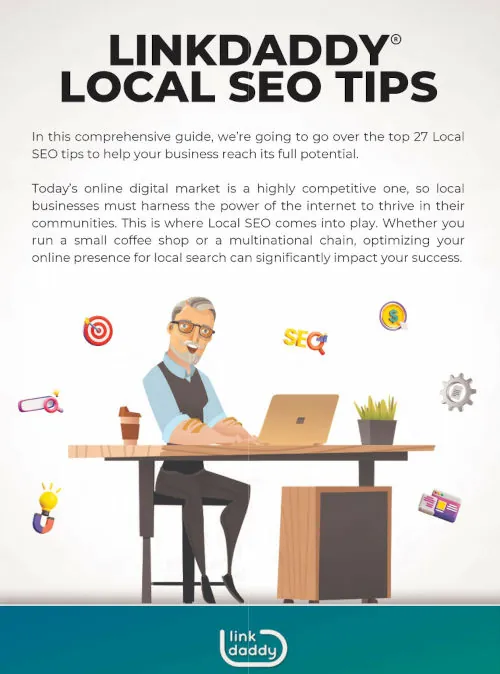It seems that SEO professionals are always discussing what to avoid when it comes to SEO and websites. Spam can cause a website to lose its ability to rank, drive traffic, and generate revenue.

Website publishers don’t deliberately spam. If they do, it’s not sustainable. Many websites get infected with spam practices inadvertently. They’re surprised to find that they don’t rank in search engine rankings. They could face a penalty or even be deleted from the search engine index.
Google fights spam in its search results. Google even released a new spam algorithm in June, which they called a spam upgrade. It included a lot more detection smarts and brand-new technology. Spammers are not allowed to fly under the radar.
Is it possible that you are doing webspam even though you don’t mean to? It’s probably wise for us to start off by clearly defining what spam is as well as what you can do if it happens.
What Is Spam?
Webspam can take many forms. It is a deliberate attempt to manipulate search engine rankings using deceptive practices. It is best to ask yourself if you have earned your search engine rankings. If it doesn’t, it’s likely spam. Spam practices are used to increase traffic to websites or those of clients.
Spam has been a major money-maker for many industries over the years (think casino, porn, and pharmaceuticals). These types of sites have been a long-standing goal for search engines.

Since the invention of search engines, people have tried to manipulate their way to the top. It’s bad news for search engines because more relevant pages are buried under non-relevant results.
This also makes it harder for legitimate websites and SEO professionals to have their sites found. Google has been fighting spammers since the inception of Google’s search engine. Their goal is to help people find the answers they are looking for and assist legitimate websites with getting search traffic. Spam just clogs up the system, causes Google more work to find the relevant results, and if served up to a search engine users won’t help them find the answer or information they were looking for.
Google’s algorithms are very good at detecting spam and removing it from the search results in most cases. To protect the index’s quality, Google is also open to manual actions to remove spamming results from search results.
Search engine guidelines are a guideline for websites that want to rank high in search results. Anything that doesn’t follow the guidelines is likely to be considered Spam and liable to some action or penalty.
Different Types Of Spam
Clear instructions are given in Google’s Webmaster Guidelines regarding how to avoid spamming. Let’s take a look at each one.
Affiliate Programs
It can be difficult to set up affiliate programs. Google states that affiliate websites don’t provide any additional value to web users, particularly (but not exclusively) if they are part a program that distributes their content across a network.
Pages with product affiliate links are pages where product reviews and descriptions are copied from the original merchant. Most of the site is designed for affiliation. It contains very little original content or added value.
Google points out that not every affiliate site is a weak one. For example, good affiliates can provide original product reviews, ratings, and navigation of products or category, as well as product comparisons.
So if you have an affiliate site Google is telling you that in order to rank well you will need to provide useful, relevant information.
Automatically Generated Content

Auto-generated content refers to content created programmatically with an intention of ranking, and not providing any value to the user. Google provides examples:
- Text that is not clear to the reader, but may include search keywords.
- Text is automatically translated using an automated tool, without the need for human review or curation prior to publication
- Text generated by automated processes such as Markov chain. These are quite good, but easily detectable.
- Automated synonymizing and obfuscation methods to generate text
- Text created by scraping Atom/RSS feeds, or search results
- Combining content from different websites without adding enough value.
Cloaking
Cloaking is the practice of serving search engines different URLs than users. Cloaking isn’t necessarily bad and can be used in certain situations. It can be used to deceive people, but it is spam when it is done in a way that makes it appear as though it’s a page on baby blankets was given to Google and a porn website given to the users. Google illustrates this and other cloaking methods as spam.
It could be a page of HTML text is served to search engines, while users are shown a page with images. They use coding to insert text or keywords onto a page if the requester is a search engine and not a human visitor.
Doorway Pages

Doorway pages are web pages that are designed solely to be found by search engines. They are stuffed with keywords to help them rank. These pages are automatically redirected to other pages when a user attempts to access them. These are some of the examples Google offers:
- Multiple domain names, pages or websites that target specific areas or cities to funnel users to a single page
- To funnel site visitors to the most useful or relevant section of your site, pages are created
- Pages that are substantially similar to search results but not in a clear, browsable hierarchy
Hidden Text And Links
Hidden text and links should not be hidden on a webpage. Spam is when hidden text and links are placed on pages. Google provides examples:
- Use white text with a white background
- Locate text behind an image
- Use CSS to position text off-screen
- Set the font size at 0
- Hidden a link by linking only one small character, such as a hyphen at the end of a paragraph.
Keywords That Are Irrelevant
Google refers to “keyword stuffing” when a website places too many keywords on a page to try to manipulate rankings. Google provides examples:
- Phone numbers lists without significant added value
- Text blocks that list the cities and states that a website is trying to rank.
- For example, repeating the same phrases or words so many times that it makes it sound unnatural. We sell custom umbrellas. All custom umbrellas we sell are made by hand. If you’re thinking of buying a custom umbrella, please contact our custom umbrella specialists at [email protected].
Link Schemes

Google provides extensive information about link spam. There are many ways people can use links incorrectly. Link schemes are links to or from sites that are designed to manipulate rankings. Google provides examples:
- Selling or buying links that have PageRank. This includes:
- Exchange money for links or posts that include links
- Exchange of goods and services in exchange for links
- In exchange for the writer of the product and a link, you can send someone a “free” product.
- Excessive links exchanges (“Link me to you and I’ll do the same”) or pages created by partners solely for cross-linking.
- Large-scale guest posting and article marketing campaigns using keyword-rich anchor text hyperlinks.
- Automated programs and services can be used to create links to your website.
- A link must be required as part of a Terms of Service or contract. Third-party content owners have the option of qualifying the outbound links, if they choose.
Spam also includes links that are not natural. Google provides examples:
- PageRank-compliant text advertisements
- Native advertising or advertorials where payment is made for articles with links that pass PageRank
- These links are optimized with anchor text for articles and press releases that are distributed on other websites. Take this example:
- There are many options for wedding rings. You will need to choose the right ring if you are planning a wedding. Flowers and a dress for the wedding are also necessary.
- Links to low-quality bookmark sites or directory links
- Widgets embedded with keywords-rich, hidden, or low-quality links that are distributed across multiple sites, such as: This page has been visited by 1,472 people Car insurance
- Many links are found in the footers and templates of different sites

Comments on forums with over-optimized hyperlinks in the body or footer such as:
That’s some great information!
– Paul
paul’s cafe San Diego cafe best cafe San Diego
Google states that paid links can be OK, but should clearly indicate this. Advertising is an integral part of the internet economy. However, you should not try to increase your site’s authority by using paid links. That would be spam.
Pages That Display Malicious Behavior
This refers to any practice which attempts to harm an end-user. Google provides examples of malicious behavior on pages:
- Modifying or manipulating content locations on pages so that users think they are clicking on a specific link or button. However, the click is registered by a different section of the page.
- Inserting pop-ups or new ads onto pages; swapping out old ads on a page with other ads; or promoting and installing software that does this.
- Unwanted files included in a downloaded file that the user requested
- Installing trojans, spyware, or viruses on a computer user’s computer
- Changes to a user’s search preferences or homepage without their informed consent
Scraped Content
Spam is when you take content from other websites and put it on your site. Google provides examples.
- Sites that republish content from other websites without adding original content or value
- Sites that take content from other websites and modify it in some way (e.g., using automated techniques or synonyms) and then republish it
- Sites that replicate content feeds from other websites without offering any type of unique organization or benefit for the user
- Sites that embed video, images, or other media from other websites without providing any added value for the user
This should not be confused with duplicate content on your website that occurs due to sharing similar or identical content between websites.
Sneaky Redirects
Website visitors can be directed to a URL that is not their original destination by sneaky redirects. Google provides examples.
- Search engines show one type of content, while users are redirected towards something substantially different.
- Mobile users will be redirected to an entirely different spam domain, while desktop users will see the same page.
Spam Generated By Users
Sometimes, user-generated spam is a result of other people’s actions that are directed at your site. Google offers these examples:
- Spammy accounts with free hosts
- Spammy posts in forum threads
- Comment spam on blogs
Google won’t issue manual actions in most cases. However, the site owner is responsible for monitoring and taking care of any penalty.
SEO considers spam to have two potential negative effects:
- A search engine user won’t be able to find relevant information
- It causes a lot of extra work for Google to filter out the spam
Google has 2 main methods of detecting spam and dealing with it:
- The search engine algorithm detects spam and takes care of it.
- A human reviewer detects spam and issues a penalty (manual action) on the site.

Spamming can lead to traffic and rankings being lost. In some cases, the site may be removed entirely from the index. This is reserved for manual actions.
If you do find spam on your website, you need to figure out how to fix your website. It can be easier to take manual actions. Google will send you a message citing the issue. Even so, it is possible for the message to not direct you to the problem.
You will need to be a detective if you are dealing with an algorithmic update that involves many changes at once.
While we do get updates from Google occasionally (or you can use the SEO tools to track these types of changes), there is still work to be done. The only way you may find out is if you have a sudden drop in traffic on your site. Now you have to find out what caused the drop in traffic or rankings.
You should be careful not to make any changes to your site in an algorithm situation too quickly. Google may make changes to its algorithm and traffic might increase or decrease over the course of a week.
Take a deep breath, relax and wait for things to settle down for a while. You can start to research online about what SEO professionals are saying about the update before diving in and taking action.
Last Thoughts
While legitimate websites aren’t spammy, they can be infected by spammers without even knowing it. Website owners who hire cheap SEO services can end up in a lot of trouble, especially when it comes to linking.
Using a professional service such as LinkDaddy® with a great online reputation is only the way to be sure that you are making the right move. To take advantage of our free trial just click here, and find out how we can help you.
Understanding what spam is in SEO will allow you to be more prepared to identify what to avoid and how to diagnose your site if it loses traffic or rankings.
Expert help may be needed if you suspect that your website might have been caught in a spam trap. Many companies have been helped by us in these situations. For a consultation and a free quote, contact us today.
To find out more about our free trial just click here.









